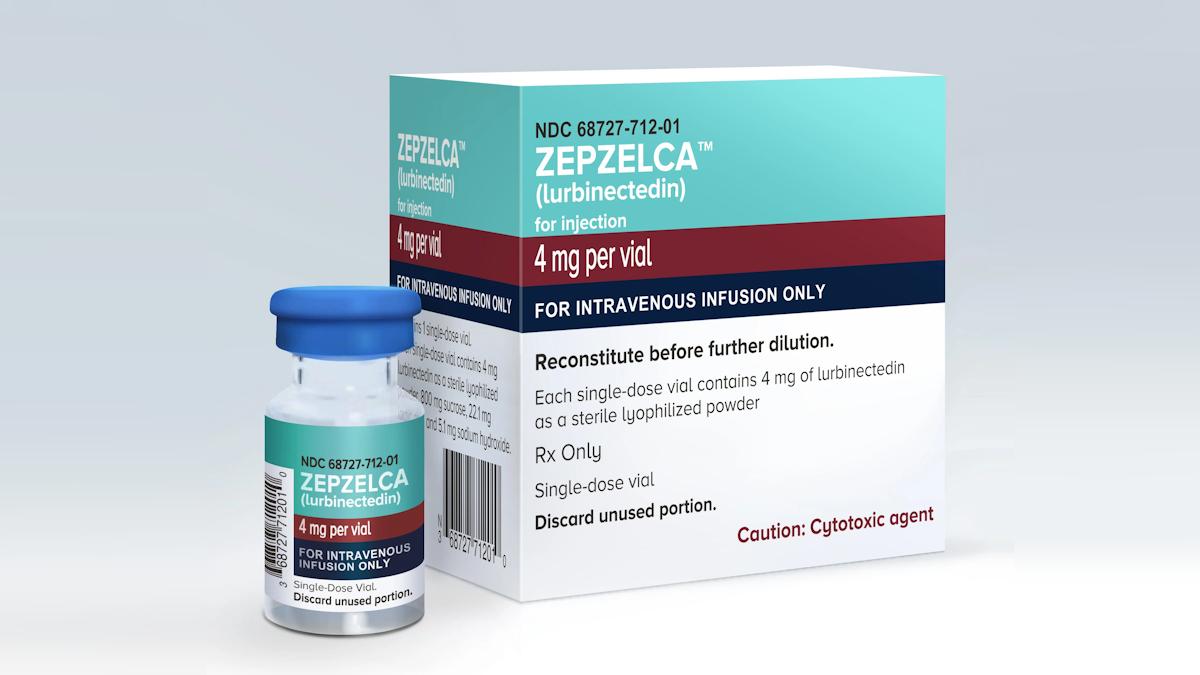Tagrisso-chemo cleared in US as 1st-line lung cancer therapy

AstraZeneca’s Tagrisso can be used alongside chemotherapy as a frontline therapy for EGFR-positive non-small cell lung cancer (NSCLC), according to the FDA, consolidating its position as the standard of care in newly diagnosed patients.
The US regulator has approved the drug after a priority review on the strength of data from the FLAURA 2 study showing that the combination of EGFR inhibitor Tagrisso (osimertinib) and chemo cut the risk of disease progression or death by 38% compared to Tagrisso alone in treatment-naïve EGFR-positive NSCLC patients.
The study, which was published in the New England Journal of Medicine last November, revealed that progression-free survival was extended by around nine months with the combination versus Tagrisso alone.
The jury is out on the impact of the new approval on sales of Tagrisso – AZ’s top product with revenues of $5.8 billion last year – unless the combination is also shown to improve overall survival in an update on the FLAURA 2 data expected to be presented in the next few months.
AZ has said it sees the combination of Tagrisso and chemo as a “best-in-class offer” for a subset of patients who require more intensive treatment upfront; for example, as a result of a high tumour burden at diagnosis and/or tumours that have spread into the central nervous system. In part, that is because the addition of chemo adds to the side effect burden on patients.
There are around 200,000 people diagnosed with lung cancer in the US each year, with 80-85% of them having NSCLC. Of these, around 70% are diagnosed at an advanced stage and 15% have tumours with an EGFR mutation.
If clinicians do reserve Tagrisso plus chemo for use in patients with a need for more intensive therapy, that could limit use to 20% of eligible patients or less. Tagrisso is already approved as a first- and second-line monotherapy for EGFR-mutated NSCLC and as a post-surgery adjuvant therapy for earlier-stage disease.
Dave Fredrickson, head of AZ’s oncology business unit, said that the approval “reinforces Tagrisso as the backbone of EGFR-mutated lung cancer treatment,” adding that it is “especially important for those with a poorer prognosis, including patients whose cancer has spread to the brain and those with L858R mutations.”
The approval could also help AZ defend Tagrisso in the face of rising competition in the market for first-line therapies for EGFR-mutated NSCLC, including a challenge from Johnson & Johnson’s bispecific EGFR/MET-targeting antibody Rybrevant (amivantamab).
Rybrevant is currently approved only for a subcategory of EGFR+ NSCLC patients with exon 20 mutations – a niche indication not on Tagrisso’s label – but J&J is working on expanding its use in the first-line setting.
Initially, that involves seeking approval for a combination of Rybrevant and chemo in the exon 20-positive population, but J&J is also running the head-to-head MARIPOSA trial of Rybrevant and EGFR inhibitor Leclaza (lazertinib) against Tagrisso in a broad EGFR-positive NSCLC population.
That has already shown an advantage over Tagrisso on PFS, with OS data also due later this year. J&J has suggested that, if successful, it could help Rybrevant become a $5 billion-a-year product.













